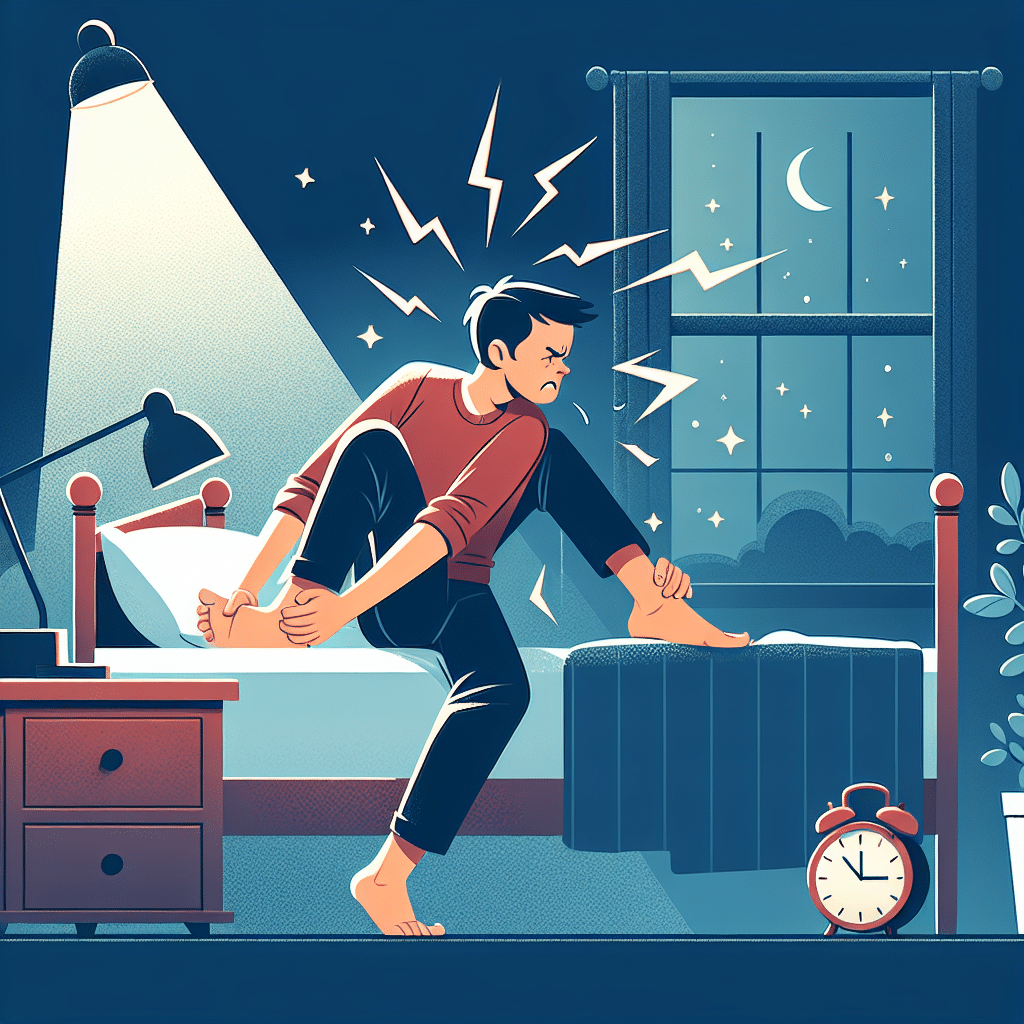Understanding Restless Leg Syndrome and Its Impact on Sleep
What is Restless Leg Syndrome (RLS)?
Restless Leg Syndrome (RLS), also known as Willis-Ekbom disease, is a neurological condition characterized by an uncontrollable urge to move one’s legs. This urge often occurs during periods of inactivity or while lying down, particularly at night. RLS can significantly disrupt sleep patterns, leading to insomnia and other related sleep disorders.
Symptoms of RLS
The primary symptoms of Restless Leg Syndrome include:
- Urge to Move: An overwhelming need to move the legs, often accompanied by uncomfortable sensations, such as tingling, prickling, or aching.
- Worsening Symptoms in the Evening: Symptoms tend to magnify during the evening and at night, making it challenging to relax.
- Relief with Movement: Symptoms can temporarily improve with movement, such as walking, stretching, or shifting positions.
- Sleep Disruption: Severely affected individuals may find it impossible to fall asleep or stay asleep due to persistent discomfort.
Causes and Risk Factors
The exact cause of RLS is not fully understood, but several factors may contribute to its development:
- Genetics: A family history of RLS is common, suggesting a potential genetic predisposition.
- Iron Deficiency: Low levels of iron in the brain have been linked to RLS. Individuals with anemia may experience heightened symptoms.
- Chronic Diseases: Conditions such as Parkinson’s disease, diabetes, and kidney failure are associated with RLS.
- Medications: Certain medications, including antidepressants and antihistamines, may exacerbate symptoms.
- Lifestyle Factors: Increased caffeine intake, alcohol consumption, and sedentary lifestyle can also stimulate RLS symptoms.
The Link Between RLS and Sleep Disorders
Restless Leg Syndrome causes significant sleep disturbances, leading to a cycle of insomnia and daytime fatigue. Those with RLS may experience:
- Delayed Sleep Onset: The discomfort associated with RLS often makes it difficult to fall asleep.
- Frequent Awakenings: Many individuals report waking up multiple times throughout the night due to leg discomfort, resulting in fragmented sleep.
- Reduced Sleep Quality: Even if individuals manage to fall asleep, the quality of sleep is often poor, leading to unrefreshing sleep.
The interplay between RLS and other sleep disorders, such as periodic limb movement disorder (PLMD), can further complicate sleep issues.
Diagnosing Restless Leg Syndrome
Healthcare professionals typically diagnose RLS based on the following criteria:
- Patient History: A comprehensive discussion of symptoms, including their severity and frequency.
- Physical Examination: Evaluating for other underlying conditions that could contribute to symptoms.
- Sleep Studies: Polysomnography may be employed to assess sleep patterns and rule out other sleep disorders.
Treatment Options for RLS
While there is no cure for Restless Leg Syndrome, various treatment options can help manage symptoms:
-
Lifestyle Modifications:
- Regular Exercise: Moderate physical activity can alleviate symptoms.
- Sleep Hygiene: Developing a consistent sleep routine, such as maintaining a regular bedtime and creating a comfortable sleep environment, can improve sleep quality.
- Avoid Triggers: Reducing or eliminating caffeine, nicotine, and alcohol may decrease RLS symptoms.
-
Dietary Changes:
- Iron-Rich Foods: Consuming foods high in iron, such as red meat, beans, and dark leafy greens, can help if iron deficiency is a contributing factor.
- Magnesium and Folate: Supplements containing magnesium or folate have been known to alleviate symptoms for some individuals.
-
Medications:
- Dopaminergic Agents: Medications like pramipexole and ropinirole are commonly prescribed to help manage RLS symptoms by targeting the dopamine pathways in the brain.
- Anti-Seizure Medications: Gabapentin and pregabalin have shown effectiveness in reducing symptoms for patients with RLS.
- Opioids: In more severe cases, low doses of opioids may be recommended for symptom relief.
-
Alternative Therapies:
- Cognitive Behavioral Therapy (CBT): Therapy focusing on changing unhelpful thoughts and behaviors surrounding sleep can benefit individuals struggling with RLS and insomnia.
- Acupuncture: Some studies suggest acupuncture may provide relief for those with RLS symptoms.
Tips for Improving Sleep with RLS
To enhance sleep quality for those afflicted with Restless Leg Syndrome, consider the following strategies:
- Establish a Relaxation Routine: Engage in calming activities before bed, such as reading or practicing mindfulness meditation.
- Warm Baths and Massage: Soaking in a warm bath or receiving a leg massage can alleviate RLS symptoms and promote relaxation.
- Elevate the Legs: Using pillows to elevate the legs may offer relief during sleep.
Emotional and Psychological Impact
Living with Restless Leg Syndrome can lead to emotional distress, anxiety, and even depression due to disrupted sleep and chronic discomfort. Acknowledging these feelings and seeking support, whether through counseling or support groups, may help individuals cope with the psychological effects of RLS.
Final Note
Restless Leg Syndrome significantly affects sleep quality and overall well-being. Understanding the condition, its symptoms, and potential management strategies is crucial for those struggling with RLS. By employing a combination of lifestyle modifications, dietary changes, and appropriate treatments, individuals can find ways to manage their symptoms and improve their sleep quality.
